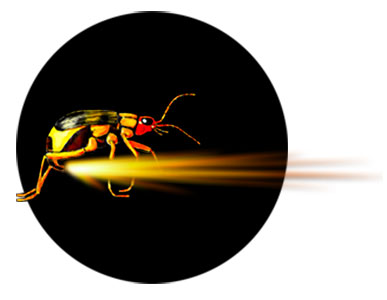
MENU

Bombardier Beetle
The bombardier beetle actually fires a “flame thrower” at its enemies. A small jet of extremely hot chemicals, which explode when they are mixed, are fired from a gun-like appendage in the beetle’s tail section.1 According to the Theory of Evolution, mutations must prove beneficial to an organism, making it stronger or in some way better. It would then be “naturally selected” to replace the original organism. But macroevolution cannot logically explain how the many necessary but highly integrated changes could have all taken place at the same time and thus allowed the beetle’s flame thrower to be a useful improvement.
Many animals such as the bat, the giraffe, the woodpecker, the hummingbird, and hundreds of others have mechanisms in their bodies that are completely unexplainable by macroevolution. All these mechanisms would require hundreds of highly integrated changes to have occurred at the same time for the mechanism to be an improvement and not a hindrance to the animal. If the changes were only partial, then mechanisms such as the bombardier beetle’s flame thrower would be either totally useless or a hindrance, causing the animal to be weeded out by natural selection. “Unless every detail of this unusual beetle’s complex flame thrower worked 100% of the time, the beetle would simply explode!”2
If you listen carefully to the explanations given on many nature-oriented television programs about how certain animals evolved, you will hear the narrator ascribe a sense of purpose to the process. Evolutionists find it difficult to explain complex mechanisms without describing them as designed features that developed to meet a need. How easily they forget, when looking at obviously designed creatures, that the development of highly complex structures is far beyond the demonstrated capability of mutations which are supposed to be the raw materials of macroevolution!
When commenting on his faith in the ability of mutations and natural selection to produce complex organisms, evolutionist Julian Huxley wrote, “No one would bet on anything so improbable happening. And yet it has happened! It has happened, thanks to the working of natural selection and the properties of living substance which make natural selection inevitable!”3 Many, like Mr. Huxley, have expressed a profound faith in Darwinian evolution, but real science requires evidence.

“Unless every detail . . . worked 100% of the time, the beetle would simply explode!”
Biochemist
Duane Gish
- Rick Imes, Incredible Bugs (New York, NY: Barnes & Noble Books, 1997), pp. 92, 93.
- Gish, Duane T., The Amazing Story of Creation. (El Cajon, CA: Institute for Creation Research, 1990), pp. 96-101.
- Julian Huxley as quoted in Henry M. Morris, ed., Scientific Creationism (El Cajon, CA: Master Books, 1985), p. 67.
Design, graphics and artwork copyright © 2016 Tim Beasley • All rights reserved.